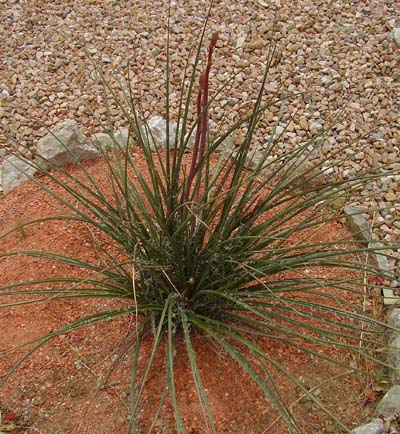RICHARD S. DARGAN | Landscape
Red Leaf Yucca | |||||||
|
|
Species: Hesperaloe parviflora The hardiness of the red leaf yucca—actually a succulent of the Agave family—has made it a very common landscaping plant of the Southwest, At maturity, it reaches heights of three to four feet and similar widths. Once the weather turns warm, one or more coral red spikes emerge from within the yucca's mound of leaves and shoots up quickly. As these stalks rise higher and higher—sometimes to more than six feet—they begin to arch over. These flower spikes provide a striking red contrast to the drab green of the leaves. Round seedpods will form on the flower stalks. Though red leaf yuccas are not prolific reseeders, you may see a few new sprouts emerging in other parts of your yard. These hatchlings can easily be dug up and replanted in other locations.They make a good accent for the strip of land between the curb and sidewalk, and are useful for breaking up large expanses of rock mulch. Care is minimal. Cut the woody, spent flower spikes away, and be sure to pull any weeds around the base when you first see them, as they quickly become difficult to remove. |
||||||
